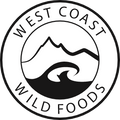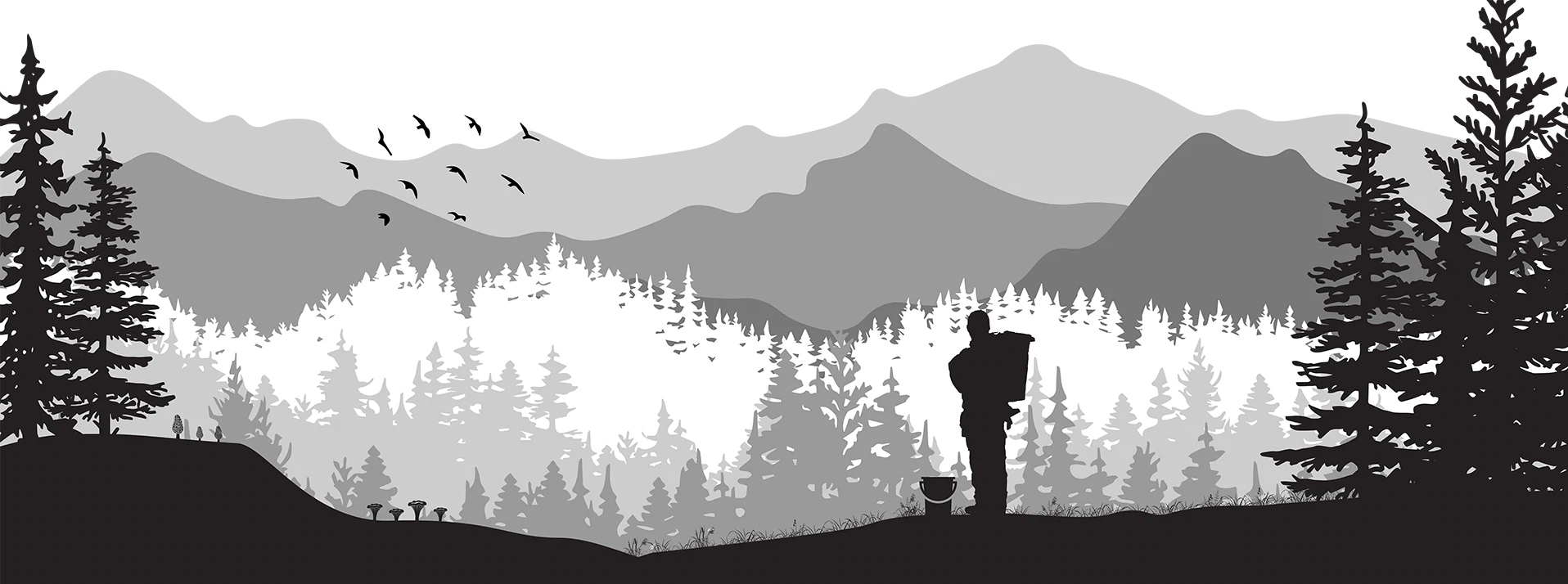May through August is Morel Mushroom season here in the Pacific Northwest – one of the most exciting and enjoyable times of the year! Whether you are a seasoned veteran of morel mushroom picking, a culinary enthusiast, or just curious as to what all the ‘buzz’ is about regarding these fascinating mushrooms, this article will explain the who, what and why of the morel mushroom season across the region.

Morels are revered worldwide as a delicacy; loved by chefs and food enthusiasts alike for their unique taste and flavour-enhancing characteristics, particularly in French cuisine. They are most commonly sautéed in butter with a little garlic or cracked pepper, stuffed with crab meat or risotto, or used in a cream sauce to accompany pasta dishes. The magic of morels however comes not only from their taste, but also from the adventure and lifestyle that is associated with foraging for these elusive mushrooms.
Each year across British Columbia, Washington State, Oregon, Montana and Northern California, morel mushrooms grow in abundance in areas of forest that have experienced a wildfire. There are various schools of thought as to exactly how and why the forest fires provide the perfect environment for these mushrooms to grow, but it’s commonly agreed that both the removal of underbrush from the forest floor and the chemical changes that the soil experiences from the intense heat of the fire and the addition of organic material from burned trees and root systems allows the mycelium (the underground vegetative network of silk-like threads from which the mushrooms grow) to thrive and produce the fruiting bodies that we see above ground. In the cross-sectional picture below, you can see the white mycelium “flushing”, producing the “fruiting body” which is the mushroom:

Now that we know where morel mushrooms grow, how do they make it to our plates? Foraging for morels is perhaps one of the most exciting and rewarding summer activity for anyone that enjoys hiking or spending time outdoors. We work with local people in each area that these mushrooms grow every year, and people travel from all over North America to take part in the harvest. It is also one of the hardest and most physically demanding jobs out there; spending an entire day hiking through the backcountry in remote areas of forest looking for an area with the perfect combination of tree type, soil type, elevation, moisture content in the ground and the extent to which the ground was burned. In order to find a patch of morels, each of these factors play an important role. Once you’ve found the right area (and often hiked many kilometers in the process), your harvest can begin!
Many people will use a pack frame with baskets to carry their harvest, and the most experienced foragers will tell you that this is a must in order to be able to make it back to your vehicle without damaging the mushrooms. In a typical day, a person foraging for morels will spend most of their time either “hiking in” or “packing out”, the actual time spent picking the mushrooms is a relatively small part of the day. The next time you’re enjoying a nice morel linguini or a morel mushroom soup, spare a thought for the brave and adventurous person who spend hours hiking in the wilderness hunting for these incredible ingredients!

Another very important aspect of foraging for morels is the responsibility that we all share to take care of the land on which we harvest and make it a priority to leave the land exactly as we found it. In other words, “take only mushrooms, leave only memories”. In 2018 we were very happy to take part in the first-ever Stewardship and Harvest Permit Program in British Columbia; lead by the Secwépemc Communities of central BC. This program brought together the local First Nations communities who worked alongside Natural Resource Officers of British Columbia to lead the way in ensuring the environmental protection and stewardship of the land on which morel mushrooms are harvested. This program allowed pickers and buyers to be updated daily on current fire conditions, logging activities in the area, safe harvesting practices, as well as providing garbage removal services and washroom facilities in the areas where people were foraging. Details of this program can be found here: Elephant Hill fire
Although morel mushrooms have been a popular menu item in restaurants around the world for many years, they are often quite difficult for the average person to find in their local grocery store. This is due to the fact that morels are not only hard to find in the forest, but they also don’t last very long in a bulk produce bin for various reason. Not only do they lose weight as they sit out fresh, but they are also quite delicate and don’t hold up well to over-handling when compared to regular white button mushrooms.
This year, for the first time, we would like to be able to offer these amazing mushrooms to local shoppers here in the Pacific Northwest in backyard compostable, take home containers. We have designed our fresh retail pack with two things in mind: keeping the impact on our environment to a minimum through our packaging and keeping the quality of the fresh mushroom to a maximum through our pack size and availability. These 100g packs are the perfect size for a meal for 3-4 people, while being small enough to ensure that none go to waste!

You can find these in the produce section of your local grocery store, or alternatively you can order them online for pickup or delivery!
If you would like some meal inspiration, we have recipes featured on our website and would love to hear what your favourite way to cook morel mushrooms is!


